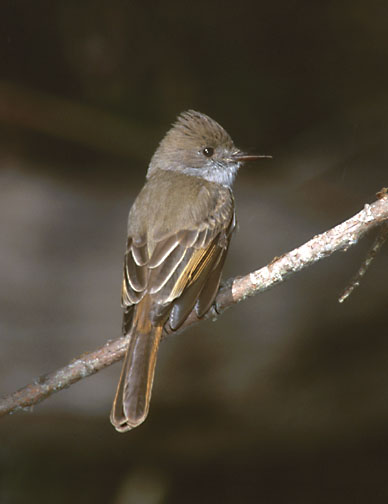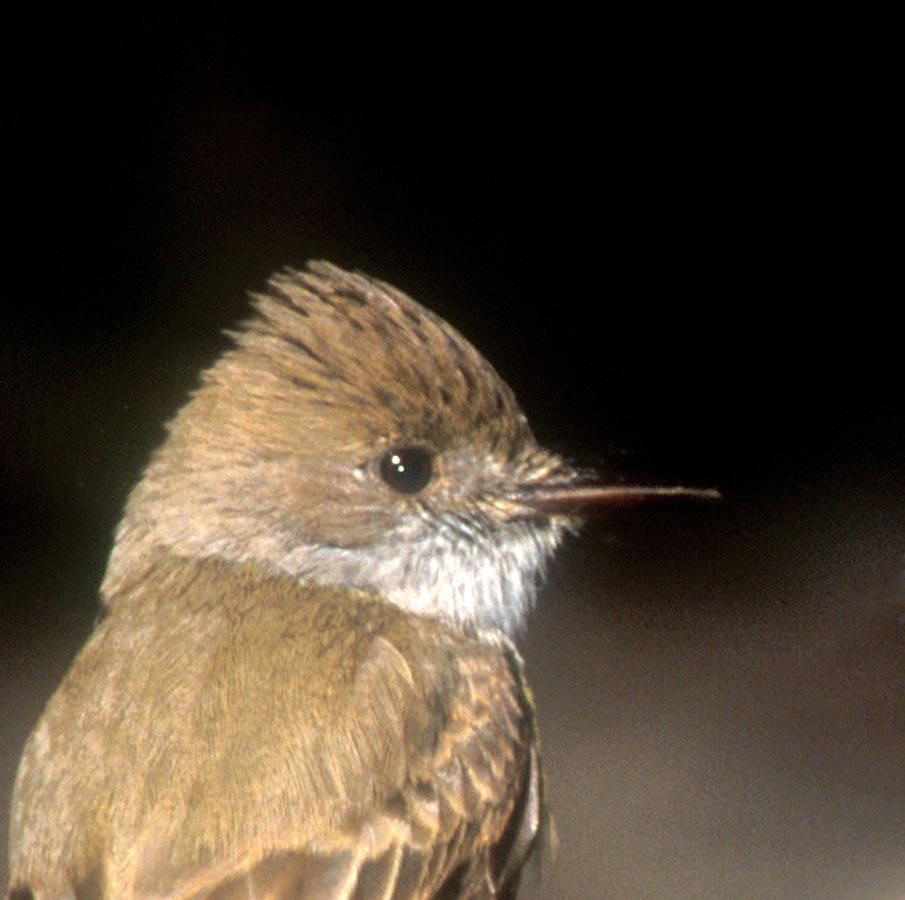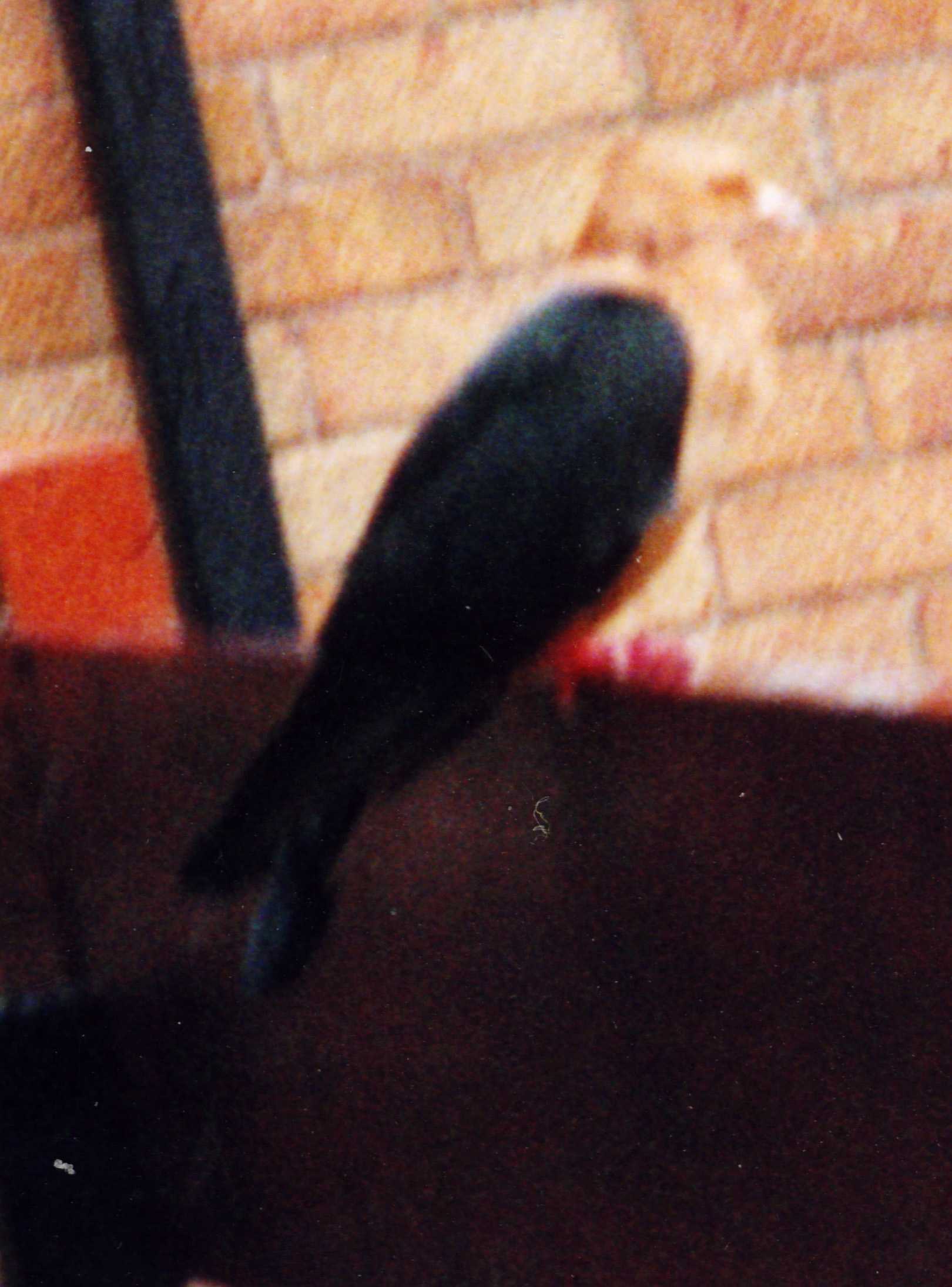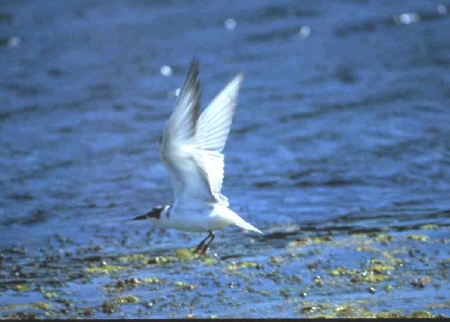|

Following the publications of the Birdchat Quiz # 42 results, I received comments from Dr Carol Foil and Bo Beolens challenging the identification of the bird submitted by Don DesJardin. To address their criticisms, I contacted Steve Cardiff, who recently wrote a great new Myiarchus ID article on the LOS website.
This article is highly recommended to birders interested in field identification of this family.
Here is the kind reply from Steve.
Birdquiz # 42: the Myiarchus Flycatcher.
by Steven W. Cardiff, Collections Manager, Sections of Ornithology and Mammalogy, Museum of Natural Science, Louisiana State University
Baton Rouge, LA - USA.
January 26, 2001.
"Dear Stephane:
To make a long story short, I initially leaned toward Ash-throated, but left open the possibility that it could be a Dusky-capped (of the duller, paler NW subspecies olivascens).
After checking specimens here at LSU this morning, I don't see how it could be anything other than Dusky-capped Flycatcher (Myiarchus tuberculifer). The ID is primarily based on the combination of the rufous-edged outer and middle secondaries and that the bird appears to be in relatively unworn adult-type (or at least Basic I) plumage. Juvenal Ash-throateds and other Myiarchus can have rusty edged secondaries, but this bird is obviously not in Juvenal plumage, and there's no sign of pre-Basic body or wing molt. Basic I Ash-throateds can retain some rusty edged Juvenal secondaries, but such individuals almost always retain only middle Juv. secondaries, not all of the outer and middle secondaries. One can almost imagine that there is a section of paler, worn, retained Juv. greater primary coverts, and maybe some retained Juv. lesser coverts, which would be another hint that it's a hatch-year bird. The bird does seem to have at least a partial grayish hindneck collar (good for ATFL), but the auricular are pretty brownish (not good for ATFL). Otherwise, this is a very tough bird to judge (because most other diagnostic or even subjective ID characters such as tail pattern, underparts coloration, etc. cannot be seen), and I'm glad to have seen the image so that I can emphasize the difficulty of separating (from such a view) ATFL from DCFL in our forthcoming ATFL BNA account.
Most other Myiarchus species can be eliminated by the extent of rufous in the wings, bill proportions, and upperparts coloration. Nutting's or Yucatan flycatchers would be the best contenders, but both tend to be proportionately shorter and/or thicker-billed.
Sincerely,
Steve Cardiff.

Same bird photographed by Don Desjardins, at Olivas Adobe near the Ventura Marina, Ventura County, USA.
A bird of prey on a balcony ?
by Peter Wilkinson and Mike Toms.
July 08, 2000.
"Dear Stephane,
Peter Wilkinson suggested I write to you asking for help in the
identification of this mystery bird, which appeared on a balcony in
Taunton,
Somerset, England during May 2000. The lady who owns the balcony
took a
rather poor photo of the bird and described it as a bird of prey.
The
initial description over the phone suggested a Red-footed Falcon, although
from the photograph this appears not to be the case. The photo
has been
cropped to zoom in on the bird, but the resolution at 800dpi is not
great,
particularly since the colour of the head and breast match the bricks
on the
wall behind.
The general feeling about the bird is either that it is a falcon/hawk/caracara
or a
pigeon!! Not much consensus there.
With best wishes,
Mike Toms
Research Officer
British Trust for Ornithology
The Nunnery, Thetford
Norfolk
IP24 2PU "

Birdquiz # 6 : a controversy ?
by Peter Adriaens.
July 06, 2000.
"Hello Stéphane,
The tern in Round 1, quiz 6, is in fact a Whiskered Tern, not a Black
Tern
as advertised. Of course, this is only my opinion, but I am quite sure
of
it. Good indications that this bird is a Whiskered, are its clearly
long
legs (tarsi) and its heavy, dagger-like bill (you mention that Black
Tern
would have a heavier bill than Whiskered; this is not the case. If
you look
at field guides or photographs, you will see that Whiskered has the
heaviest
bill of the three marsh terns.). Its plumage is much too pale for Black
Tern, even when taking into account the effects of overlighting in
this
picture. The paleness of the plumage can perhaps best be judged from
the
upper primaries and the underwing.
The head pattern is like Whiskered, showing a dark eye-mask, darker
than the
crown and rear-head. Black Tern has a black crown, especially towards
the
rear. There is no clear white eyering (unlike Black Tern) and no white
cheeks.
The dark breast-patch is admittedly well-marked for a Whiskered, but
it
looks browner and paler than the blackish head-pattern, so it is still
within the variation for this species.
The dark alula, showing through on the underwing, is also a character
of
Whiskered Tern.
Best regards,
Peter Adriaens
Belgian Rarities Committee"

A young bird to identify !
by Stefano Fantini.
November 1999.
"I have been in Minorca last june and I have took a photo of this
mistery bird. Could you help me to find out what it is ?
Using my guide (Collins) at the pages no. 273 and 267. I think that
it cannot be a Berthelot's pipit (page 247) because of his dark legs: juv.
of Berthelot's pipit has pale tarsus. I think it could be: Black-eared
Wheatear (Oenanthe hispanica) or Pied Wheatear (Oeananthe pleschanka)
because of his dark plumage Otherwise my photo shows a breast very
streaked and the wing has an extended-white part as in a Stonechat
(Saxicola torquata). Stonechat has no white stripe over the eye-ring
and has no paler zone in the secondaries. Let me know your opinion.
Thanks and hear you soon. Stefano Fantini - Cesena (Italy)"

Please reply to Stefano Fantini and cc your answer to me. Thanks ! Stéphane Moniotte.
Comment from Peter Adriaens, from the Belgian Rarities Committee.
I feel confident that it is a juvenile Stonechat.
The very dark upperparts with white spotting allover, the dark legs,
delicate bill, and the rather short tail (compared to body) all point to a
juvenile chat. The white inner greater-covert patch is typical of Stonechat.
As this bird is a fresh juvenile, all its plumage feathers are very fresh,
with pale edgings, which creates the effect of two white wingbars and pale
edgings to outer tail-feathers (the latter effect may also be enhanced by
the photograph itself). Note however, that pale outer edges to the tail are
not at all rare in Stonechats, whether they are juveniles or adults; just
have a look at a range of photographs and you will see. The same goes for
the pale patch just behind the eye, and the pale wing panel; I do not agree
with your saying that these characters would never occur in this species.
Again, please have a look at photographs: many birds, especially when in
fresh plumage, show a hint of a supercilium (also even in front of the eye),
and a slightly paler wingpanel as well.
Winchat never shows a white patch on the inner greater coverts, nor a
complete pale edge to the outer tail feather. It also has a longer primary
projection than this bird.
The other solutions that you propose, are hardly worth considering:
Berthelots Pipit only breeds on and near the Canary Islands (besides, this
bird is way too dark for any pipit, and its primaries clearly extend beyond
the tertials, not shown in pipits except for Pechora), and there are no
wheatears with two pale wingbars, a completely white innermost greater
covert, and a complete pale edge to outer tail feathers.
Kind regards,
Peter Adriaens
Belgian Rarities Committee

|
